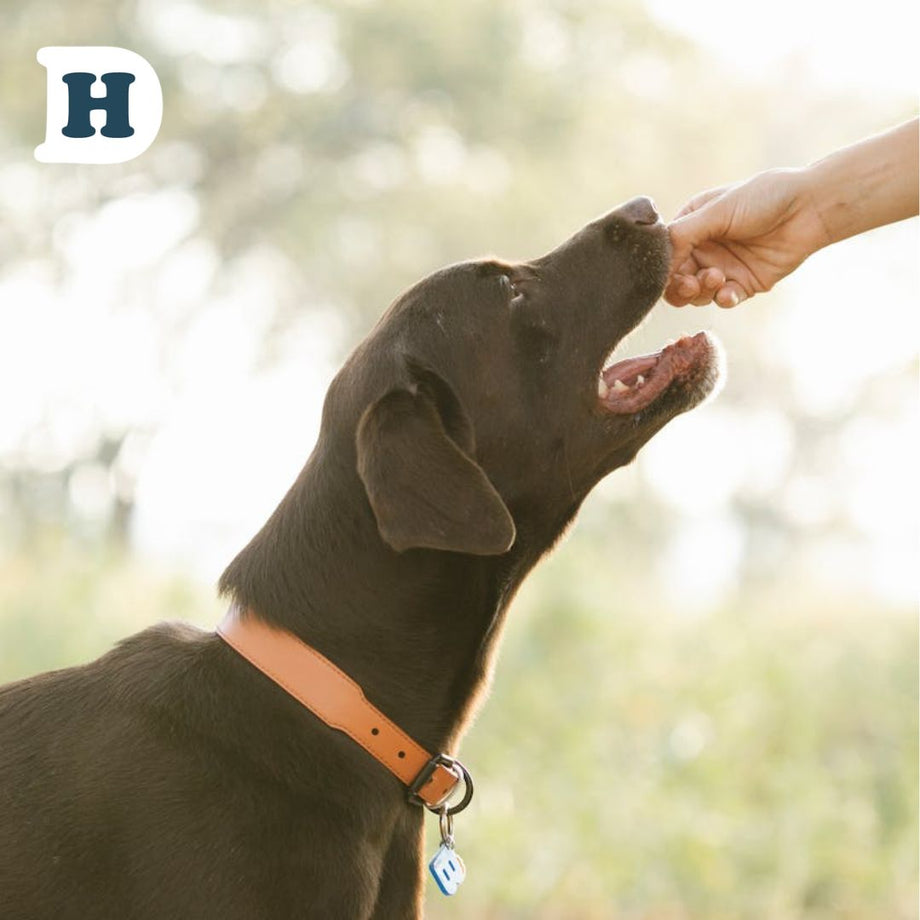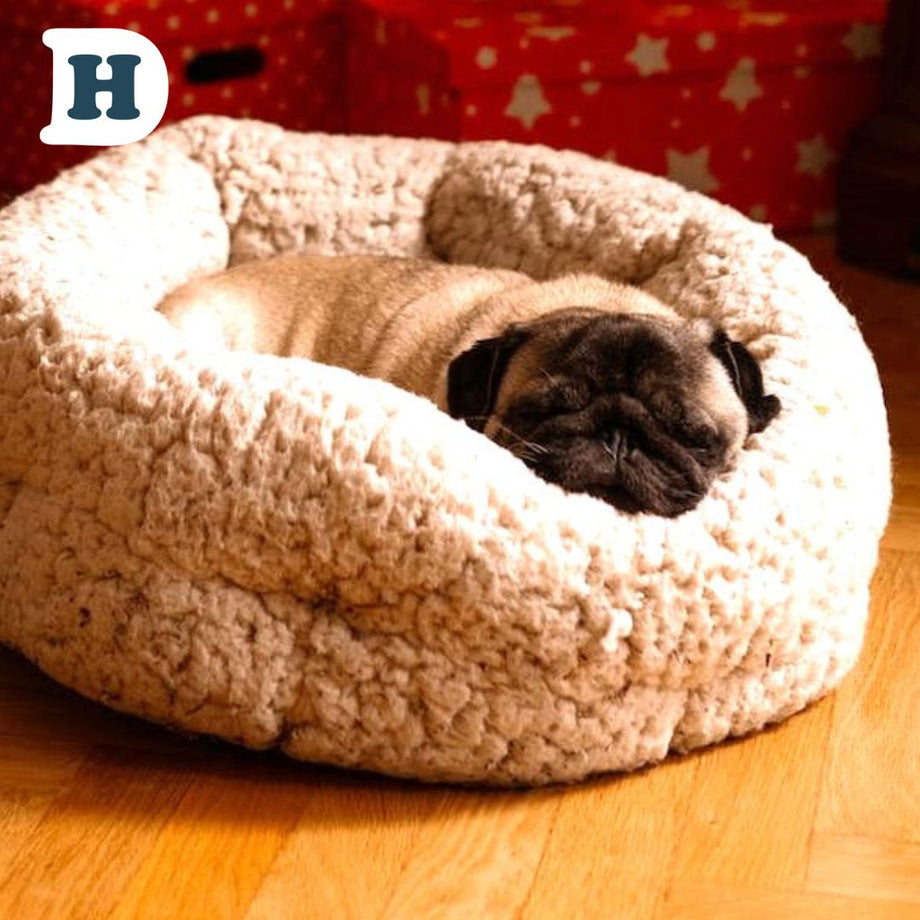 Welcome to the fascinating world of your furry friend's eye goop! As a dog owner, you may have noticed that sometimes your canine companion's eyes produce a sticky, gooey substance, commonly referred to as eye goop. While it may seem like a minor annoyance, understanding the reasons behind this phenomenon is crucial for your dog's overall health and wellbeing. In this article, we will delve into the five main reasons why your dog's eyes may be prone to producing this goop. From allergies and infections to blocked tear ducts and even breed-specific predispositions, we will explore each factor in detail, shedding light on the potential causes and solutions. By keeping your eyes wide open and gaining insight into your dog's eye goop, you will not only be able to provide better care for your beloved pet but also ensure their eyes stay healthy and vibrant. So, let's embark on this eye-opening journey together and discover the secrets behind your dog's eye goop!
Welcome to the fascinating world of your furry friend's eye goop! As a dog owner, you may have noticed that sometimes your canine companion's eyes produce a sticky, gooey substance, commonly referred to as eye goop. While it may seem like a minor annoyance, understanding the reasons behind this phenomenon is crucial for your dog's overall health and wellbeing. In this article, we will delve into the five main reasons why your dog's eyes may be prone to producing this goop. From allergies and infections to blocked tear ducts and even breed-specific predispositions, we will explore each factor in detail, shedding light on the potential causes and solutions. By keeping your eyes wide open and gaining insight into your dog's eye goop, you will not only be able to provide better care for your beloved pet but also ensure their eyes stay healthy and vibrant. So, let's embark on this eye-opening journey together and discover the secrets behind your dog's eye goop!
Common Causes of Dog Eye Goop
Your dog's eyes may produce goop for various reasons, and understanding these causes is the key to addressing the issue effectively. One of the most common culprits behind eye goop in dogs is allergies. Just like humans, dogs can be allergic to certain substances, such as pollen, dust mites, or certain foods. When exposed to these allergens, their immune system reacts, leading to inflammation in the eyes and the production of excessive tears and discharge. Allergies can be seasonal or year-round, and identifying the specific trigger can help in managing the symptoms.
Another common cause of eye goop in dogs is infections. Bacterial or viral infections can lead to redness, swelling, and discharge in the eyes. Infections can occur due to various reasons, such as foreign objects entering the eyes, trauma, or underlying health conditions. It's important to identify the type of infection through a proper diagnosis to provide the appropriate treatment. Antibiotics or antiviral medications may be prescribed to eliminate the infection and reduce the eye goop.
Blocked tear ducts can also contribute to the accumulation of eye goop in dogs. Tear ducts are responsible for draining excess tears from the eyes. When these ducts become blocked or partially obstructed, tears cannot flow properly, resulting in eye goop. This can happen due to congenital abnormalities, facial injuries, or even tumors. In some cases, gentle massage or flushing of the tear ducts may help clear the blockage, while severe cases may require surgical intervention.
Allergies and Eye Goop in Dogs
Allergies are a common cause of eye goop in dogs. Just like humans, dogs can be allergic to certain substances, such as pollen, dust mites, or certain foods. When exposed to these allergens, their immune system reacts, leading to inflammation in the eyes and the production of excessive tears and discharge. Allergies can be seasonal or year-round, and identifying the specific trigger can help in managing the symptoms.
To identify whether your dog's eye goop is caused by allergies, you may notice other symptoms such as itching, redness, and sneezing. Dogs may rub their faces against furniture or paw at their eyes in an attempt to relieve the discomfort. If you suspect allergies, it's important to consult with your veterinarian to determine the specific allergen and develop a management plan.
Managing allergies and reducing eye goop in dogs can involve several approaches. One option is to minimise exposure to the allergens. For example, if your dog is allergic to pollen, keeping them indoors during peak pollen season can help reduce symptoms. Regularly cleaning and vacuuming your home can also minimise dust mites, which are a common trigger for allergies. Additionally, your veterinarian may recommend oral antihistamines or prescribe medicated eye drops to alleviate the symptoms and reduce eye goop.
Infections and Eye Goop in Dogs
Infections can also be a significant cause of eye goop in dogs. Bacterial or viral infections can lead to redness, swelling, and discharge in the eyes. Infections can occur due to various reasons, such as foreign objects entering the eyes, trauma, or underlying health conditions. Proper diagnosis is essential to determine the cause of the infection and provide appropriate treatment.
If your dog has an eye infection, you may notice symptoms such as excessive discharge, redness, swelling, and discomfort. In some cases, the discharge may be thick and yellowish-green. It's important not to ignore these signs and seek veterinary care promptly. Your veterinarian will examine the eyes and may perform tests, such as swabs or cultures, to identify the specific pathogen causing the infection.
Treatment for eye infections in dogs typically involves the use of antibiotics or antiviral medications. These medications can help eliminate the infection and reduce the production of eye goop. Your veterinarian may also recommend cleansing the eyes with a sterile saline solution or prescribed eye drops to keep the area clean and prevent further complications.
Blocked Tear Ducts and Eye Goop in Dogs
Blocked tear ducts can contribute to the accumulation of eye goop in dogs. Tear ducts are responsible for draining excess tears from the eyes. When these ducts become blocked or partially obstructed, tears cannot flow properly, resulting in eye goop. This can happen due to various reasons, such as congenital abnormalities, facial injuries, or even tumors.
If your dog's eye goop is caused by blocked tear ducts, you may notice a constant watery discharge from the eyes, accompanied by crusty or sticky eye goop. The eyes may appear irritated, and your dog may paw at them in discomfort. It's important to have your veterinarian evaluate the situation to determine the underlying cause and develop an appropriate treatment plan.
In some cases, gentle massage or flushing of the tear ducts may help clear the blockage. Your veterinarian may demonstrate the proper technique for you to perform at home, or they may recommend in-office procedures to address the issue. In more severe cases, surgical intervention may be necessary to correct the blockage and restore proper tear drainage.
Conjunctivitis and Eye Goop in Dogs
Conjunctivitis, also known as pink eye, is another common cause of eye goop in dogs. This condition involves inflammation of the conjunctiva, the thin membrane that covers the white part of the eye and lines the inner surface of the eyelids. Conjunctivitis can be caused by infections, allergies, irritants, or underlying health conditions.
If your dog has conjunctivitis, you may notice symptoms such as redness, swelling, discharge, and discomfort. The discharge may be watery, mucous-like, or thick and pus-like, depending on the underlying cause. It's important to seek veterinary care to determine the cause and appropriate treatment.
Treatment for conjunctivitis in dogs may involve the use of prescribed eye drops or ointments to reduce inflammation and control the infection. Your veterinarian may also recommend cleaning the eyes with a sterile saline solution to remove any discharge and keep the area clean. In cases where allergies are the underlying cause, identifying and managing the specific allergen can help prevent future flare-ups.
Other Possible Causes of Dog Eye Goop
While allergies, infections, blocked tear ducts, and conjunctivitis are the main reasons for eye goop in dogs, there are other possible causes to consider. Some dog breeds are more prone to excessive eye discharge due to their anatomy. For example, brachycephalic breeds, such as Bulldogs and Pugs, often have shallow eye sockets and prominent eyes, making them more susceptible to eye goop.
Additionally, certain environmental factors can contribute to eye goop in dogs. Exposure to dust, smoke, or other irritants can lead to increased tear production and discharge. Dry air can also cause the eyes to become dry and irritated, leading to the production of eye goop. Ensuring a clean and dust-free environment for your dog, as well as providing proper humidity levels, can help minimise these factors.
Prevention and Treatment of Dog Eye Goop
Prevention and treatment of dog eye goop depend on the underlying cause. If your dog is prone to allergies, identifying the specific allergen and minimizing exposure can help reduce symptoms. Regular cleaning of your home, including your dog's bedding and toys, can also help minimize allergens. Your veterinarian may recommend antihistamines or other medications to manage allergies and reduce eye goop.
For infections, early diagnosis and appropriate treatment are crucial. Seeking veterinary care promptly if you notice symptoms of an eye infection can help prevent complications. Your veterinarian may prescribe antibiotics or antiviral medications, along with supportive care, to eliminate the infection and reduce eye goop.
If your dog has blocked tear ducts, your veterinarian will determine the best course of action based on the severity and underlying cause. Gentle massage or flushing may be recommended in some cases, while others may require surgical intervention. Following your veterinarian's guidance and maintaining good eye hygiene can help manage blocked tear ducts and prevent eye goop.
When to See a Veterinarian for Dog Eye Goop
While occasional eye goop may not be a cause for concern, persistent or severe eye goop warrants a trip to the veterinarian. If your dog's eyes are constantly producing excessive discharge, if the discharge is thick and pus-like, or if your dog is showing signs of discomfort, it's important to seek veterinary care.
Your veterinarian will evaluate the eyes, perform any necessary tests, and determine the underlying cause of the eye goop. Prompt diagnosis and treatment can help prevent further complications and ensure your dog's eyes stay healthy and vibrant.
Understanding the reasons behind your dog's eye goop is essential for their overall health and wellbeing. Allergies, infections, blocked tear ducts, conjunctivitis, and breed-specific predispositions are the main factors contributing to eye goop in dogs. By recognising the symptoms, seeking veterinary care when necessary, and following the appropriate treatment plan, you can help manage and reduce eye goop in your furry friend. Remember, a little extra care and attention to your dog's eyes can go a long way in ensuring their eyes stay bright, clear, and free from goop. So, keep your eyes wide open, stay informed, and provide the best care for your beloved pet.
©deliveryhound.com.au 2023






